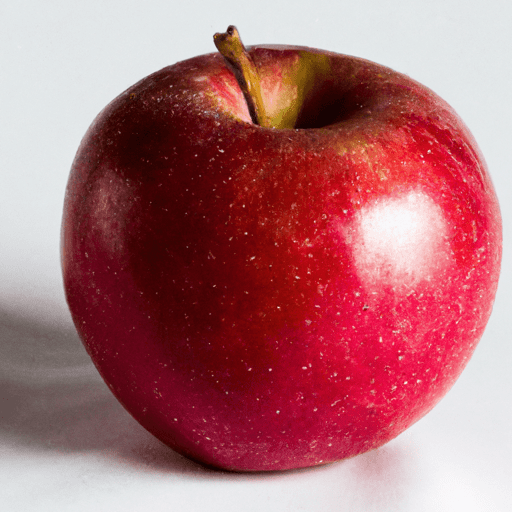Gala Apples: A Sweet and Flavorful Delight
If you’re on the hunt for an apple that perfectly balances sweetness, tartness, and flavor, look no further than the delightful gala apple. This crisp and juicy fruit, with its distinctive red and yellow skin, has become a favorite in kitchens around the world. In this blog post, we’ll explore the taste, culinary uses, nutritional value, and fascinating history of gala apples.
Taste Profile
Gala apples have gained popularity for their remarkable taste. They possess a pleasingly sweet flavor and gentle tartness, making them a fantastic choice for both snacking and culinary creations. When you sink your teeth into a gala apple, you’ll experience a burst of juiciness that’s sure to satisfy your taste buds. The fruit’s flesh is tender and its texture remarkably crisp, enhancing its overall appeal.
Culinary Uses
Gala apples are incredibly versatile in the kitchen and can be used in various recipes, adding a delightful twist to both sweet and savory dishes. Here are a few popular culinary uses for this versatile fruit:
Salads: Gala apples lend a refreshing sweetness and crunch to salads. Pair them with leafy greens, walnuts, goat cheese, and a tangy vinaigrette for a delicious and well-rounded salad experience.
Baking: These apples hold their shape well when baked, making them perfect for pies, tarts, and crisps. Combine them with cinnamon, sugar, and a buttery crust to create a comforting and mouthwatering dessert.
Sauces: Gala apples can be simmered down into a luscious sauce, ideal for accompanying pork, chicken, or even drizzling over pancakes and waffles. The natural sweetness of the fruit brings depth and complexity to any sauce.
Smoothies: Blend gala apples into your favorite smoothie recipes to add a vibrant and naturally sweet element. Combined with other fruits and a splash of yogurt, they create a refreshing and nutritious beverage.
Nutritional Value
Not only do gala apples excel in taste and culinary versatility, they also offer a range of health benefits. Packed with important nutrients, they’re a nourishing addition to your diet. Here’s a snapshot of what one medium-sized gala apple (approximately 154 grams) has to offer:
- Calories: 77
- Fiber: 4 grams
- Vitamin C: 8% of the Daily Value (DV)
- Potassium: 5% DV
- Antioxidants: Gala apples contain flavonoids and antioxidants, which support cellular health and may contribute to overall well-being.
It’s clear that gala apples are not only delicious but also contribute to a balanced and nutritious diet.
History and Fun Facts
The story of the gala apple begins in the 1930s in New Zealand. This apple is a result of cross-pollination between Golden Delicious and Kidd’s Orange Red apples. It received its name due to its inaugural showcase at the Royal New Zealand Horticultural Society in 1965, where it was hailed as a “gala” event. Since then, gala apples have taken the world by storm and have become one of the most popular apple varieties.
Today, gala apples are widely cultivated in different regions, including the United States, New Zealand, and Europe. Their accessibility and year-round availability have helped establish them as a household favorite.
Gala apples reign supreme when it comes to taste, adaptability in the kitchen, nutritional benefits, and rich history. Whether you enjoy them raw, baked into a pie, or featured in a savory dish, gala apples are sure to delight your senses. Make sure to grab a bag of these crisp and juicy fruits during your next trip to the grocery store. They’ll bring a burst of sweetness and flavor to your culinary adventures.
Gala Apples:
Origin: The Gala apple is a widely cultivated apple variety that was developed in New Zealand in the 1930s. It is a hybrid of the Kidd’s Orange Red and Golden Delicious apple varieties.
Common Uses: Gala apples are popular for both eating fresh and using in cooking and baking. They have a crisp texture and a sweet, mildly tart flavor, making them suitable for various dishes such as salads, pies, sauces, and desserts.
Nutritional Benefits: Gala apples are a good source of dietary fiber, vitamin C, and antioxidants. They also provide small amounts of potassium, vitamin A, and iron. Including Gala apples in your diet may contribute to maintaining a healthy immune system and promoting good heart health.
Unique Properties: One notable characteristic of Gala apples is their distinctive thin skin, which is usually yellow-green with a red blush. They have a firm, juicy flesh that is pale yellow. Additionally, Gala apples are known for their pleasant aroma.
Historical Significance: The Gala apple gained international recognition for its unique flavor and appearance. It quickly became popular in Europe and the United States and is now one of the most widely grown apple varieties worldwide. Its success in the market has led to the development of other apple varieties through breeding programs.




Use the share button below if you liked it.
It makes me smile, when I see it.